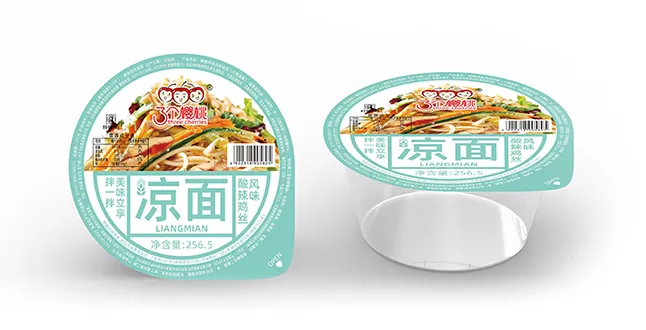difference udon and soba
The Difference Between Udon and Soba A Culinary Exploration
When exploring Japanese cuisine, two popular noodle dishes often come up in conversation udon and soba. While they might seem similar at first glance, these two types of noodles possess distinct characteristics that make them unique. From their ingredients to their culinary applications, understanding the differences between udon and soba can enhance your appreciation for Japanese food.
Ingredients and Preparation
One of the most obvious differences between udon and soba lies in their ingredients. Udon is made primarily from wheat flour, water, and salt, resulting in a thick, chewy noodle with a smooth texture. The dough is kneaded and rolled out, then cut into wide strips. Udon noodles are typically about 4 to 6 millimeters in width, larger than most other noodle varieties, making them hearty and satisfying.
In contrast, soba is made from buckwheat flour, which gives it a more distinct and earthy flavor. Sometimes, wheat flour is added to improve the noodle's elasticity, but the best soba is made from 100% buckwheat. Soba noodles are finer than udon, usually around 1 to 2 millimeters in width, which lends them a delicate texture. Additionally, buckwheat is gluten-free, making soba a suitable option for those with gluten intolerances.
Cooking Methods
The cooking methods for udon and soba also differ significantly. Udon noodles are typically boiled until tender and can be served in a hot broth or stir-fried with vegetables and proteins. They also absorb the flavors of the dishes they are served with, making them versatile for various preparations. A common way to enjoy udon is in a hot soup called kake udon, where noodles are served in a savory broth made from dashi, soy sauce, and mirin, garnished with green onions, tempura, or tofu.
difference udon and soba

Soba, on the other hand, can be served in two primary ways hot or cold. When prepared hot, soba is often served in a similar style to udon, in a flavorful broth. However, it is also popular served cold, particularly in the summer months. Cold soba is typically rinsed under cold water after boiling, then served with a dipping sauce called tsuyu, made from a mix of dashi, soy sauce, and mirin. This method allows the natural flavor of the buckwheat to shine through, making for a refreshing meal.
Nutritional Differences
From a nutritional perspective, udon and soba offer different health benefits. Udon, being wheat-based, is generally higher in carbohydrates and calories, making it a hearty option for those in need of energy. However, it lacks the nutritional profile found in soba. Soba noodles, rich in protein and fiber, also pack a punch in terms of vitamins and minerals, including manganese, magnesium, and antioxidants. The presence of buckwheat also provides various health benefits, such as improved heart health and better blood sugar control.
Cultural Significance
In Japanese culture, both udon and soba hold significant meaning. Soba is often associated with celebrations and is traditionally eaten on New Year's Eve, symbolizing the crossing over from one year to the next. Udon, on the other hand, is seen as comforting food, often enjoyed during colder months.
Conclusion
In summary, while both udon and soba are beloved staples in Japanese cuisine, they differ in ingredients, cooking methods, nutritional content, and cultural significance. Whether you prefer the thick, chewy texture of udon or the delicate, earthy flavor of soba, both noodles offer a delightful taste of Japan's rich culinary heritage. So next time you enjoy a bowl of noodle soup, take a moment to appreciate the unique qualities that make both udon and soba special!
-
Wholesale Ramen Noodles SuppliersNewsAug.27,2025
-
Organic Soba NoodlesNewsAug.27,2025
-
Organic Ramen Noodles BulkNewsAug.27,2025
-
Improving Foodservice: A Wholesale Buyer’s Guide to Fresh PastaNewsAug.27,2025
-
Dragon Chuka Soba NoodlesNewsAug.27,2025
-
A Timeless Treasure of Northwestern ChinaNewsAug.27,2025
-
Types of Cold NoodlesNewsAug.27,2025
Browse qua the following product new the we







